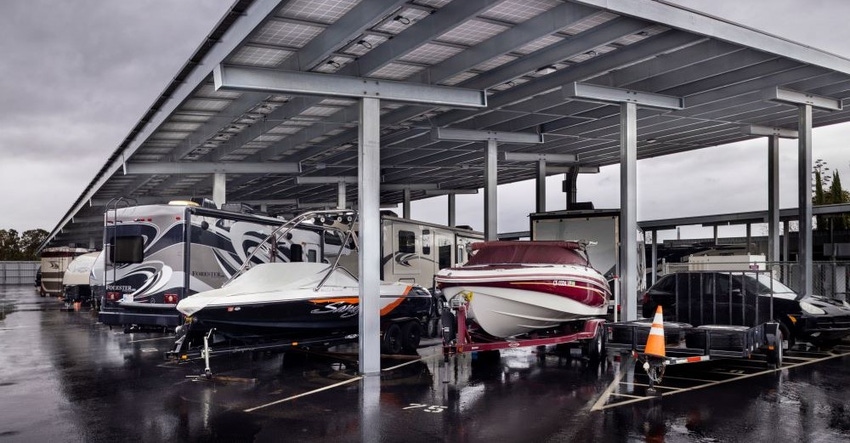Determining the Viability of a Potential Boat/RV-Storage Development: Not Yet Smooth Sailing
Boat and RV storage is becoming a high-demand product, and many self-storage developers recognize the value it can bring to a new facility and their community. However, determining whether it’s viable for a particular market can be tricky. Find out why conducting a feasibility study for a boat/RV-storage project still comes with obstacles.

With the explosive growth of boat and RV sales in recent years, there’s never been a better time to begin offering self-storage solutions for these vehicles. But even though there’s demand for the product, determining the viability of a potential development is often just an educated guess. It’s easy to commission a detailed feasibility study for a self-storage project, but for boat/RV storage, there are still obstacles to gathering the information an owner or investor needs to make a firm decision. Here’s why.
Lack of Awareness
When you’re in an industry that’s relatively new, such as boat/RV storage, the lack of supply creates massive demand. At the same time, there’s low public awareness of the available products and services.
For example, at one of my company’s top-performing self-storage facilities that also offers boat/RV storage, we offer units with electricity to help owners charge their trolling motors and devices. The spaces even include a small refrigerator, which customers seem to love. Initially, lease-up on these units was slow because customers simply didn’t know the option existed. But as awareness grew, the units filled, and we now have a waitlist of several months.
Lack of Demographic Data
When determining the feasibility of a traditional self-storage development, there are always confounding variables to consider, such as student and prison populations that aren’t factored into the census data for a specific market, for example. With boat and RV storage, however, we have very little data to even predict the ideal customer type or demographic.
Rural residents with wealth may be more likely to spend money on boat/RV storage, but they may be just as likely to purchase land for this purpose or even build their own warehouse. Conversely, a customer of lower income who lives in a dense urban area may be more likely to pay for storage to protect one of their most valuable possessions or simply because they can’t store it at their residence due to city ordinances.
Difficult Demand Data
When conducting a self-storage feasibility study, there are two widely accepted methods for determining market demand: square feet per capita or square feet per household. Both are tied to population. For boat/RV storage, we must combine statistics from multiple sources to gauge demand. For example, with boats, there’s data from numerous national, regional and local organizations to consider. There’s also the transient nature of the product. Quite often, a boat or RV will be purchased in one market but primarily used in another. In addition, there’s a very strong resale market to consider.
Further, it isn’t enough to know the level of demand. You must also know the type of storage to meet customer needs. For example, Minnesota with its many lakes has the most boats per capita of any state in the country, thus having a higher demand for boat storage. But you couldn’t simply supply outdoor storage or covered parking, given the region’s annual snowfall. What you need here are fully enclosed spaces.
In self-storage, when we analyze a potential market, we often look at the number of traditional vs. climate-controlled units. The data is pretty widely available and easy to compare, as most facility operators post their inventory and rates online. But for boat/RV storage, it’s difficult to make side-by-side comparisons due of the variety of products available. These vehicles might be stored at home, in a warehouse (heated or unheated) or even in a storage condo. They can be stored in the open, under a canopy or in an enclosed space. Because of the variety of solutions, market share and saturation are difficult to estimate.
More Info Needed
If you’re seeing a theme here, you realize it all comes back to a dearth of information. We don’t yet have a widely accepted standard for appraisers, builders and the industry at large to substantiate boat/RV-storage demand. When my company has conducted feasibility studies for clients, they’ve been a wide-ranging analysis with a general recommendation, but we often suggest phasing out construction and using waitlists to substantiate market demand. As this asset class matures, we look forward to having more reliable information to analyze.
Charlie Kao is the principal of Twin Oaks Capital, a Michigan-based commercial real estate company specializing in self-storage and multi-family assets. Services include real estate brokerage, asset management, feasibility studies, consulting and construction management. The company and its affiliates have owned, operated or planned more than 1 million square feet of self-storage. Charlie also owns House of Kaos Real Estate School, which provides continuing education credits for licensed realtors. He can be reached at [email protected].
About the Author(s)
You May Also Like







